Cambodia: How WFP school meals support boosts children’s health and nutrition
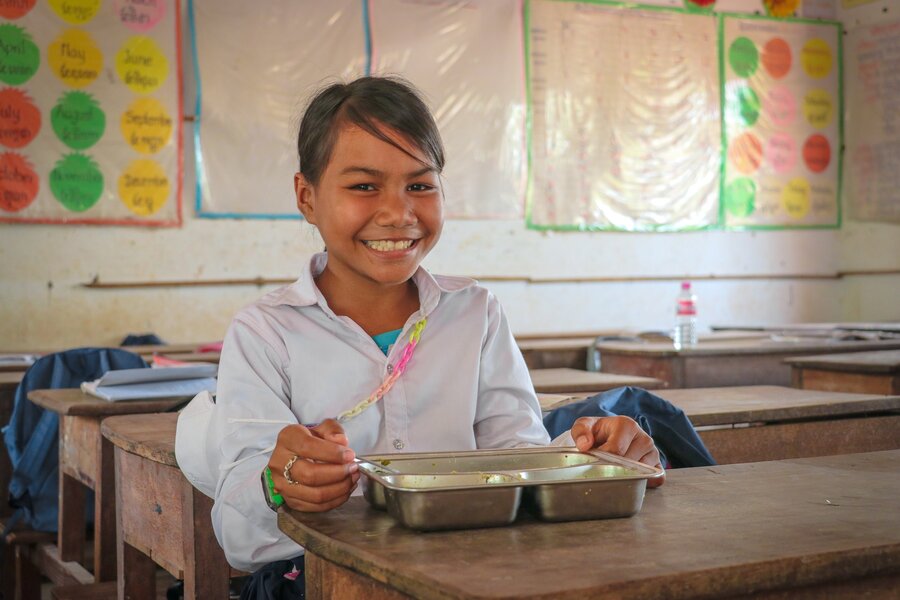
Before first light, 11-year-old Reaksmey is already out of bed preparing for the school day.
“I usually wake up feeling very energetic,” she says, smiling – that’s just as well. She and her little sister have a 30-minute walk ahead of them to the Tany school in Banteay Srey district in Cambodia’s Siem Reap province.
“[We’re] already looking forward to going to school and eating there.”
Schools across Cambodia were closed for almost two years due to COVID19. Classes are now running again and students at schools across the country eat a healthy meal at school from WFP.
Every day before lessons begin, students eat a nutritious breakfast made from locally grown vegetables that can include meat and eggs served with fortified rice. This is part of WFP’s homegrown school meals programme where local farmers earn an income by supplying schools with fresh foods.
Meals are prepared by Ko Pheap, the school cook, who also happens to be Reaksmey’s grandmother.
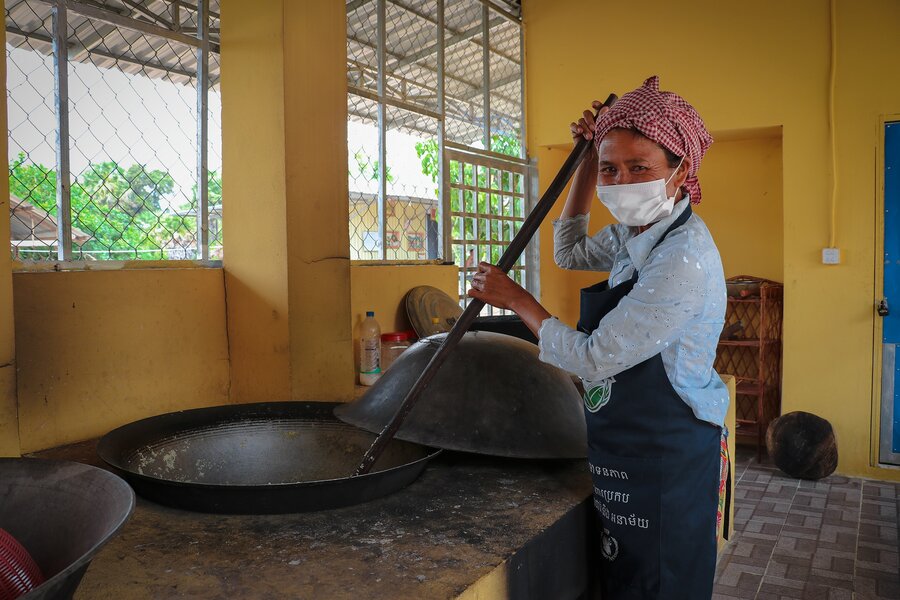
The World Food Programme doesn't just procure ingredients, but also makes sure a hygienic kitchen is in place.
“These facilities are so new and well designed,” says Pheap. “It’s so easy to store food safely and keep everything clean and hygienic. Before [WFP’s intervention] the space was so cramped it was difficult to cook well.”
As part of the infrastructure upgrades, WFP ensures that the newly installed stoves are specifically designed to use less firewood than traditional stoves and are energy-efficient and shorten the cooking times. This makes sure that people operating them are spared the harmful health effects of smoke inhalation.
Pheap always strives to provide a healthy and balanced diet, mixing up meals using a variety of ingredients.
“My favourite meal is definitely korko,” Reaksmey says, referring to a traditional Cambodian fish stew filled with different types of vegetables.”
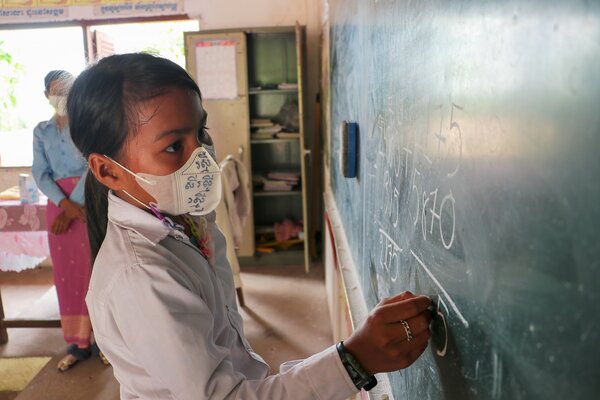
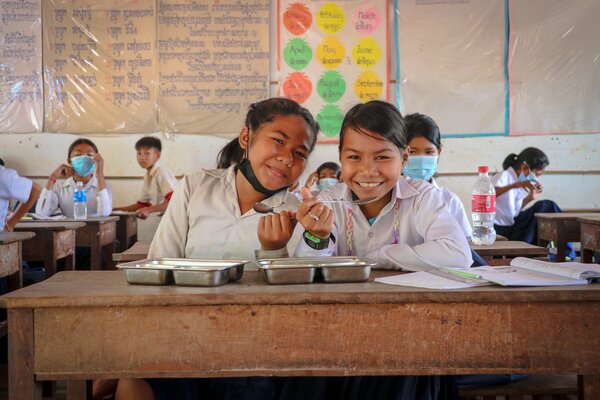
When the school bell strikes, the children rush to wash their hands in the newly installed group handwashing facilities before lining up for their first meal of the day. Encouraging students to wash their hands is a key priority for Tany primary school to ensure that the nutritional benefits of the meal are not lost to illnesses such as diarrhoea.
WFP’s approach to school feeding is not just about providing students with food – it is also about improving their health, nutrition and hygiene. WFP also ensures that students have access to clean water and improved bathrooms and kitchens at school.
In Cambodia, most primary school children only study for half a day and each school teaches two groups of students a day. This way, all of the 3.2 million children in the country have the opportunity to go to school.
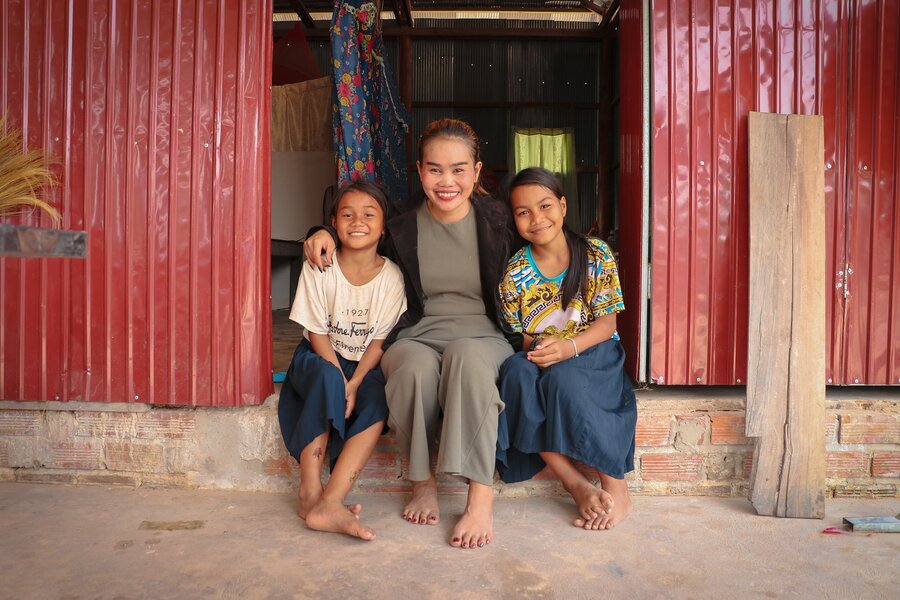
Reaksmey’s mother, Thy welcomes the school meals support and says it takes a lot of pressure off her family. “Our economic situation is difficult,” says Thy. “My husband and I are both day labourers, so it can be hard to get by from day to day.”
In Cambodia, day labourers typically earn up to US$7.5 per day, but the work is not reliable.
“It’s really good that my children are fed well and aren’t starving when I get back from work,” she adds. “That helps me a lot.”
But Thy emphasizes that one of her top priorities is making sure her children eat well so that they can grow mentally and physically.
“I just want Reaksmey and her little sister, Reaksa, to keep learning, because I didn’t get the chance to study when I was young. I want her to get a good job to get herself out of poverty and have choices in her future.”
WFP’s school meals programme in Cambodia is generously supported by the US Department of Agriculture.



